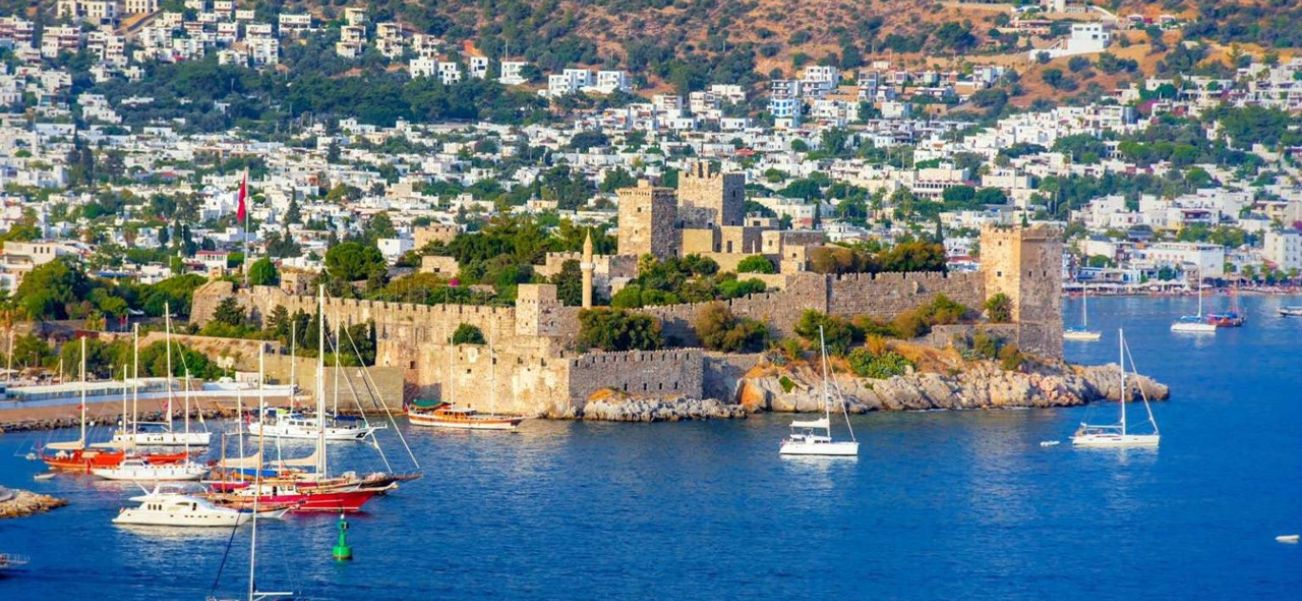
The History of Bodrum Castle: A Timeless Fortress by the Aegean
Nestled on the stunning southwest coast of Turkey, where the turquoise waters of the Aegean Sea meet ancient civilization, Bodrum Castle (also known as the "Castle of St. Peter") stands as a majestic symbol of history, architecture, and cultural legacy. Its commanding presence over the Bodrum harbor has captivated visitors for centuries—and its story is just as captivating.
BRIEF HISTORY OF BODRUM CASTLE
The Pic History Of Turkey Through The Ages
Explore Bodrum in 5 Days: 5-Day Bodrum Itinerary
Origins: Built by the Knights of St. John
The history of Bodrum Castle begins in the early 15th century. After the fall of the Crusader stronghold in the Holy Land, the Knights Hospitaller of St. John relocated to the island of Rhodes. Seeking to strengthen their regional defenses, they began construction of the castle in 1402, right after the devastating sack of the nearby city of Smyrna (modern-day İzmir) by Tamerlane.
Bodrum, known as Halicarnassus in antiquity, offered both a strategic position and rich local materials. The Knights built the castle over the ruins of earlier fortifications and even incorporated stones from the Mausoleum of Halicarnassus, one of the Seven Wonders of the Ancient World, into the new walls. This blending of medieval crusader ambition and ancient legacy makes the castle a unique architectural landmark.
Hürrem Sultan: From Slave to Ottoman Empress
The Architecture: A Fortress of Symbols
The design of Bodrum Castle is a testament to medieval military architecture. It features five towers, each named after the nationality of the knights who built and manned them: the English, French, German, Italian, and Spanish Towers. High walls, narrow gates, secret passages, and moats exemplify its defensive purpose.
Emblems and coats of arms can still be seen carved into the walls—reminders of the many nations that contributed to its creation. The castle’s inner sanctum was used both for protection and worship, housing chapels, halls, and living quarters.
The House of Virgin Mary: A Sacred Destination in Ephesus
Ottoman Takeover and Transformation
The castle remained under the control of the Knights of St. John until 1522, when Suleiman the Magnificent launched a successful campaign against the island of Rhodes. The surrender of the knights included their possessions on the mainland, and Bodrum Castle fell into Ottoman hands without resistance.
The Ottomans repurposed the castle, adding a minaret to the chapel, converting it into a mosque, and using it for various administrative and military functions over the following centuries.
Hagia Sophia: A Timeless Masterpiece in Istanbul
Modern Era: From Prison to Museum
In the 19th and early 20th centuries, the castle saw less military use and was eventually used as a prison. During World War I, it suffered damage from French naval bombardments but was not destroyed.
In 1962, the Turkish government began restoration and archaeological work, transforming the castle into the Museum of Underwater Archaeology.
Today, it houses one of the world’s finest collections of artifacts recovered from ancient shipwrecks, including the famous Uluburun shipwreck, dating back to the late Bronze Age.
A Living Legacy
Today, Bodrum Castle is more than just a historic monument—it's a cultural centerpiece. It draws visitors from around the globe who come to admire its architecture, explore its museum, and reflect on the many layers of history embedded in its stone walls.
Whether you're a history buff, a traveler, or someone simply fascinated by the endurance of the past, Bodrum Castle offers a rare glimpse into the crossroads of civilizations that shaped the Mediterranean world.
Planning a visit to Bodrum? Don’t miss this awe-inspiring castle—it's a journey through centuries in just a few stone steps.














